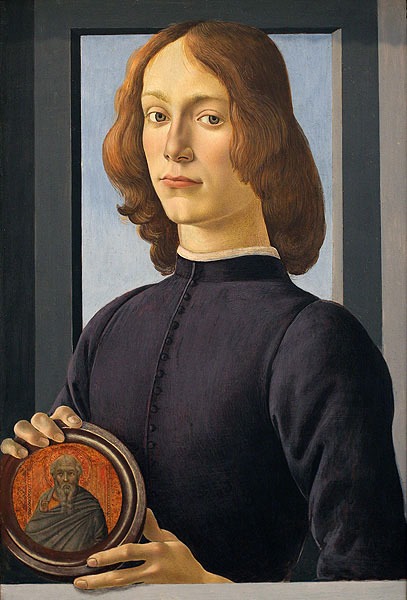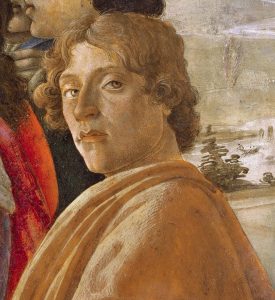A 550-year-old Sandro Botticelli portrait is set to break the old master’s auction records.
Sandro Botticelli’s ‘Portrait of a young man holding a medallion’ depicts a young, handsome and wealthy man. This painting has been described throughout history as one of the greatest portraits to have come out of the Renaissance that remained in private hands.
The artwork is to appear at auction with an estimated cost of approximately $80 million.
According to Sotheby’s, this is the largest estimate they have ever put on an old masters artwork and has been set as a reflection of the times importance and the rarity of the work.

Sotheby’s co-chairman of old-master paintings, George Wachter, stated: “Our ‘Young Man’ is 550 years old, yet he looks like he could have strolled into our galleries this morning.”
Being compared to works such as Gustav Klimt’s ‘Portrait of Adele Bloch-Bauer II’ (which, in 2006, was sold for $87.9 million) and Vincent van Gogh’s ‘Portrait of Doctor Gachet’ (which, in 1990, sold for $82.5 million), Sotherby has stated that this could be their most important portrait sale ever.
This portrait is important as Botticelli only painted approximately a dozen portraits, and, in addition, most of his works of art are housed in galleries, not owned privately such as this one.
“HE IS A TRUE BEAUTY FOR THE AGES.”
The portrait is set to be sold in January, in New York. Sotheby’s has compared the importance of this portrait with the Uffizi Galleries ‘Portrait of a Man with a Medal of Cosimo il Vecchio de’ Medici’ and the ‘Portrait of Giulian do’ Medici’ housed at the National Gallery of Art in Washington DC.
In the 1930s, it is said that their portrait was owned by Lord Newborough at Caernarfon in Wales, before which it was reportedly bought by his ancestor, Sir Thomas Wynn in Tuscany. The portrait hung in their home without any appreciation or recognition of its importance to the outside world.
After two more ownerships – once bought by an art dealer, and once bought at auction – the painting’s current owner is putting it up for auction having bought it at auction for £810,000 in 1982.
Since this purchase, the painting has had appearances at a variety of art galleries and museums including the National Gallery in London, the Städel Museum in Frankfurt, the Metropolitan Museum of Art in New York, and the National Gallery of Art in Washington.
 The young boy that Botticelli depicted was the epitome of Renaissance ideals – the way the master depicted his wavy hair, parted down the middle was found to be a large fashion trend during this period.
The young boy that Botticelli depicted was the epitome of Renaissance ideals – the way the master depicted his wavy hair, parted down the middle was found to be a large fashion trend during this period.
Further, it appears that the boy would have been upper class due to the colour of his tunic. While his clothing is modest, the colour would have been incredibly expensive to produce, only available to the wealthy.
Many of the artist’s works were lost in the bonfire of vanities in 1497 after he met religious zealot Girolamo Savonarola. Thankfully, his most famous works, ‘The Birth of Venus’ and ‘Primavera’ were not burnt.
The identity of the young man depicted remains a mystery, though it is speculated that the medallion he holds may provide clues that we have not solved yet.
It has been suggested that the boy could be part of the Medici family – one of Botticelli’s significant patrons. Many believe if could be Giovanni de’ Medici, the brother of Lorenzo de’ Medici.
While the painting is accurately Renaissance, says Sotheby’s, it is also extremely modern.
Wachter states, “this is a painting that transcends the normal boundaries of the old master genre.” Continuing that it was “one of the best preserved, most exquisite, classical Renaissance portraits that anyone could wish to own.”
According to Sotheby’s head of the old masters’ department in New York, Botticelli was one of the only artists of the Florentine Renaissance to evoke the gold age this powerfully.
“His nymphs, goddesses, Madonnas and saints populate our imagination as representatives of the rebirth of science, art, and literature in a city that laid the foundation for the modern world.
“It is in his portraits, however, that Botticelli most clearly opens a window on to the world of the Renaissance Florence – never more so than in Young Man Holding a Roundel, a painting that encapsulates the intellectual, courtly and humanistic virtues that define the Italian Renaissance.”



































